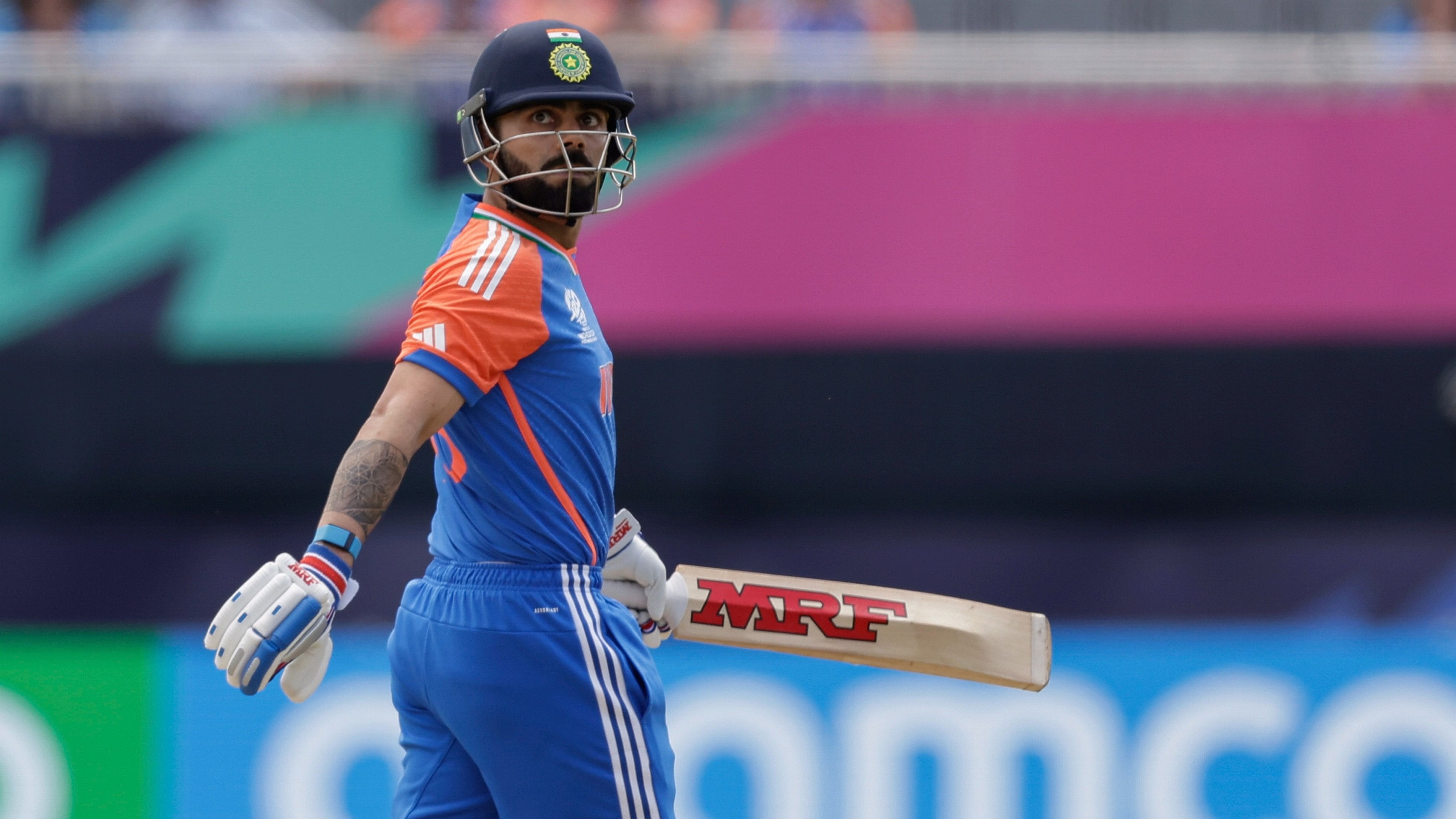
Virat Kohli walks off the pitch after being dismissed for one run during an ICC Men's T20 World Cup cricket match against Ireland.
Credit: PTI Photo
Lauderhill: For a man who has scored in all conditions, under most circumstances, across all formats, against all opponents, it’s remarkable how linear the conditions need to be for Virat Kohli to find success as an opener in Twenty20 Internationals.
He is undoubtedly one of the all-time greats in the format with over 4,000 runs from 120 T20Is, and that number swells to 8004 runs from 252 games across 17 Indian Premier League seasons.
But, the first three games of this T20 World Cup have shown him up, shed light on his mental space, made room for questions, and allowed naysayers to try and poke holes in his legacy.
Eight deliveries can’t define what Kohli has done for India in the 14 years he has played for them in this format, but how he has played those balls is unbecoming.
At a time when his inclusion into the World Cup side was in question, Kohli dismissed all questions with a remarkable run, as an opener no less, in the IPL with 741 runs from 15 games at an average of 61.75 and an impressive strike rate of 154.70.
Let’s stay with the strike rate for a moment because that was the biggest argument against him in the format. These plot lines became a norm when the Royal Challengers Bengaluru struggled with their season, but once Kohli got into a nice enough rhythm, he found his cadence, and then there was no stopping him.
As he accelerated game after game, it became more obvious that he would not be left behind. But, he didn’t realise just how problematic these pitches would be, in his head.
While Kohli has played on some tough pitches in his career, seldom have T20 pitches posed problems of the sort presented to him at the Nassau County International stadium in Long Island.
All the three pitches India played on were uneven with bounce, uneven with swing, and uneven with spin. To summarise, these were not the right conditions for the format, and yet the likes of Rishabh Pant, Suryakumar Yadav, and even Rohit Sharma to a degree found success. Kohli, though, couldn’t wrap his anxious head around it.
From the time he was asked to strap on on the practice pitches at Cantiague Park, Kohli was unimpressed, spending plenty of time engaged in staring contests with these pitches.
Those drop-in pitches were an injury waiting to happen, and it’s a surprise none of the Indians bore the long-term brunt. Conditions were much the same at the main venue, but these stakes were raised, and Kohli looked to dominate.
The result was a premeditated swipe at a short-of-length delivery from Mark Adair in the opening game against Ireland. He knew he was in trouble the second he went through with the shot because the ball angled into him and he had no room, but instead of dinking it, he went for it. It was a meek lob to Ben White at deep third. Kohli was staring at the pitch as he walked off.
In the second game, against Pakistan no less, Kohli got off to the kind of start you’d expect to inspire a half-century or something in that region. That cover-drive was a work of art, but the very next delivery, he was greedy for more and ended up chasing a short and wide delivery from Naseem Shah. The delivery kept leaving him so he could only toe-end a cut to Usman Khan at cover point. Kohli was staring at the pitch as he walked off.
Against the United States of America, left-arm seamer Saurabh Netravalkar’s first delivery to “the legend” had a ‘drive me if you can’ written all over it. Kohli took the bait, chasing it despite shuffling across a fair bit. He pushed at the ball - a flaw from an era gone by - and nicked it to Andries Gous at first slip. Kohli was staring at the pitch as he walked off.
None of these three dismissals were about the pitch. This was about what Kohli had made of these pitches. This is about how he tried to overcome that anxiety by pushing through instead of letting it come to him.
It would have been ideal for him to get a bat in Lauderhill before heading into the Super Eights, but with the match against Canada being called off, Kohli will have to rely on his experience to get him through.
Well, if anyone can, he can.